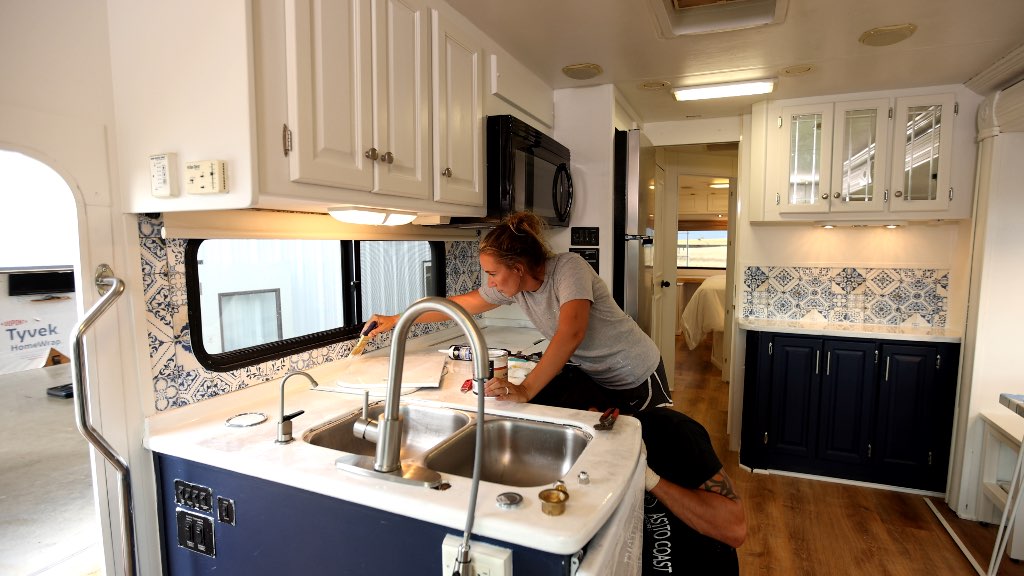How to Store Your RV in Warm Weather
Keep the heat and sun from doing permanent damage to your rig with these tips and suggestions.
Image Caption:
The arrival of summer usually means the arrival of RVs in droves at campgrounds and RV resorts across the nation, sending hikers to all of our state and national parks. It’s time for vacations, and for getting the RV out of storage. But, not everyone will be hitting the road, though. Or if they are, they may not be staying out for long periods of time. If you aren’t out traveling with your RV this summer, your RV will likely be sitting still somewhere. The other thing that the arrival of summer means is scorching temperatures—depending heavily on where you live, of course. Those temps plus the sun’s vicious rays can wreak havoc on your unsuspecting RVs, causing damage. There are plenty of tips and tricks available to help keep your RV out of harm’s way. Let’s look at a few ways to store your RV in warm weather.
RV Storage Solution
Ideally, if you’re not driving or camping in your RV, you’ll have it stored somewhere. A garage is perfect for this, but understandably not everyone will be willing to give up their garage just to store an RV.
If you don’t want to dedicate your own garage to your RV, there are other storage options as well. Many offsite locations offer RV storage, including temperature-controlled or covered options. These are great for keeping your rig out of harmful temperatures—or at the very least, out of the sun’s rays.
Tips for Storing Your RV in Warm Weather
Protecting your RV in the weather is all about the exterior. There are certain tactics you can take, and there are also a number of products that can help as well.
Wax the Exterior
A good layer of wax on the outside of the RV does wonders to protect it from the sun. Just like with an automobile, wax not only keeps water from pooling but also helps UV rays bounce off. Apply the wax after a good wash to remove all other dirt and grime. Then the wax will seal your rig and keep problems at bay.
RV Cover
If you’re not parking in a garage or covered storage facility, an RV cover is the next closest thing. RV covers come in a variety of sizes, so find one that fits your rig best. Some qualities to look for in an RV cover are breathability to prevent mold and mildew, UV resistance, reinforcement in weak areas, and even zippered access doors.
Window Covers
Part of protecting your RV from the sun is protecting the interior, too. Sun can beat through windows easily, so using solar window shades and other window covers help immensely.
Humidity Control
In dry areas, intense heat can lead items inside the RV to dry out and crack. In wetter areas, humidity can condense inside an RV and cause mildew. If you’re in a dry area, leave a bucket of water in the middle of the RV. If you’re in a wetter area, use a dehumidifying product.
Water Tanks
Flush and drain all of the water tanks to help prevent mold or mildew from growing inside them. If you’re worried about seals drying out, fill them with soapy water, which will prevent mold or mildew from growing.
Consider the AC
Sometimes, running the air conditioner (when it’s hooked up to electricity) can go a long way in preventing damage to the interior of the rig. When temperatures exceed 100 degrees, try setting the AC to 85 or so. It won’t pull a ton of electricity but will keep the internal temperature more manageable.
Tire Covers
Your tires are one of the most susceptible parts of your RV when it comes to heat. Not only are they completely exposed to the elements, they’re also black and rubber. Black absorbs heat, and rubber is prone to drying out and cracking in high temperatures. If your tires are damaged, it can lead to blowouts and flats, neither of which are fun to deal with in an RV. Tire covers can extend the life of your tires while they’re in storage and keep them safe for the road. Most come in a variety of colors so you can find one that’s lighter and helps reflect heat.
Clean and Empty the Refrigerator
Refrigerators are another one of those areas that are prone to mildew and mold. Clean yours out, disconnect it from power, and leave the door open to let air circulate.
Keep Vents Open
There are several schools of thought on this but opening at least a few roof vents can help your rig breathe—which helps it lower its temperature faster when the exterior temps start to drop. If you choose to do this, make sure you’ve got vent covers on to protect them from a sharp wind. You may end up with some dust inside your rig when you come to pick it up, but a little dust is better than a bleached couch or cracked table.
So, while for some summer means unpacking the RV from storage, for you it might mean packing yours up. And now, with these tips and suggestions for how to store your RV in warm weather, you’ll come back to your RV with it looking exactly like it did when you saw it off on its extended stay in storage.





